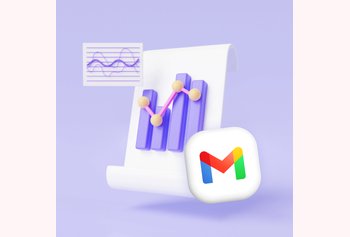18 Ways to Work Better with Google Docs

Table of contents
Google Docs has become a favorite tool for millions of people. Whether you’re writing a report for work, collaborating on a project with your team, or simply jotting down ideas, Google Docs provides an effective platform to get your writing done.
With just a Google account or a work-related Google Workspace account, you can create, share, and store documents in the cloud, making them accessible from anywhere you have an internet connection.
In this article, we’ll dive into 18 lesser-known features and tips that can help you work smarter with Google Docs. Whether you’re a seasoned user or new to Google Docs, there’s something here for everyone.
Table of Contents
- 18 ways to work better with Google Docs
- 1. Real-Time Collaboration
- 2. Voice Typing
- 3. Explore Tool
- 4. Version History
- 5. Add-Ons
- 6. Offline Mode
- 7. Templates
- 8. Advanced Formatting
- 9. Keyboard Shortcuts
- 10. Linking and Embedding
- 11. Smart Compose and Smart Reply
- 12. Document Outline
- 13. Translation
- 14. Voice Commands for Editing
- 15. Google Keep Integration
- 16. Research Pane
- 17. Equation Editor
- 18. Page Setup and Margins
- Conclusion
18 ways to work better with Google Docs
1. Real-Time Collaboration
Google Docs makes it incredibly easy to share important documents with your team. Imagine being able to collaborate with your team on changes in documents, and leave comments and suggestions – all without sending back-and-forth emails.
This feature is perfect for group projects, brainstorming sessions, or any situation where you need instant feedback.
How to use it:
- Open your Google Doc.
- Click the “Share” button in the top right corner.
- Enter the email addresses of the people you want to collaborate with.
- Set their permissions (Viewer, Commenter, or Editor) and click “Send.”
Leave comments and suggestions:
- Highlight the text you want to comment on.
- Click the “Add comment” button that appears on the right side.
- Type your comment and click “Comment.”
- To suggest changes, click on “Editing” mode in the top right and switch to “Suggesting.” Your changes will appear as suggestions that others can accept or reject.
2. Voice Typing
Voice Typing in Google Docs is a fantastic feature, especially if you find typing to be a chore or if you simply want to speed up your writing process. This feature allows you to dictate your documents, which is not only faster but also incredibly convenient if you’re multitasking or have accessibility needs.
Speaking out your thoughts can often be quicker and more natural than typing, allowing your ideas to flow freely without the interruption of keystrokes.
How to use it:
- Open your Google Doc.
- Go to the “Tools” menu and select “Voice typing…”
- A microphone icon will appear on the left side of your document. Click it to start dictating.
- Speak clearly into your computer’s microphone.
- You can say commands like “period,” “comma,” “new line,” etc., to punctuate and format your text.
3. Explore Tool
The Explore tool is like having a research assistant built right into Google Docs. It helps you find information, images, and related content without having to leave your document.
This feature is incredibly useful for writing reports, essays, or any document that requires additional information and citations. It saves you time and helps keep your writing process smooth and uninterrupted.
How to use it:
- Open your Google Doc.
- Click the “Explore” button (represented by a star) in the bottom right corner of your document.
- Type your query into the Explore search bar.
- You’ll see web results, images, and related documents from your Google Drive.
- Hover over a search result you want to use.
- Click the quotation mark icon to insert a citation.
4. Version History
Google Docs’ Version History is an invaluable feature that allows you to track all the changes made to your document. This means you can see who made what changes and when, and even restore previous versions if needed.
It’s like having a time machine for your document, which is incredibly useful for collaborative projects or when you want to revert to an earlier draft.
How to use it:
- Open your Google Doc.
- Go to “File” in the menu, then select “Version history” and “See version history.”
- A panel will open on the right showing all the changes made over time. Click on any version to see what was changed.
And to restore the previous version: In the version history panel, select the version you want to restore. Click “Restore this version” at the top of the panel.
5. Add-Ons
Add-ons in Google Docs are like mini-apps that enhance the functionality of your document. They can help with tasks such as grammar checking, e-signing documents, or creating bibliographies.
These tools are designed to streamline your workflow and make your document management more efficient. By integrating add-ons, you can customize Google Docs to better suit your specific needs, saving you time and improving productivity.
How to use it:
- Open your Google Doc.
- Go to “Add-ons” in the menu and select “Get add-ons.”
- Browse or search for the add-ons you need, then click on the one you want and select “Install.”
- Once installed, go back to the “Add-ons” menu.
- Select the add-on you want to use and follow the instructions provided.
12 Best Gmail Add-Ons to Boost Your Productivity
6. Offline Mode
Offline Mode in Google Docs allows you to work on your documents even without an internet connection. This is perfect for times when you’re traveling or in areas with unreliable internet.
Once you’re back online, your changes will automatically sync. This feature ensures that you can continue working on your projects without interruption, regardless of your connectivity situation.
How to use it:
- Open Google Drive in your web browser.
- Click on the gear icon (Settings) in the top right corner and select “Settings.”
- In the “Offline” section, check the box next to “Create, open, and edit your recent Google Docs, Sheets, and Slides files on this device while offline.”
- Your recent documents will be available to open and edit even when you’re not connected to the internet.
7. Templates
Google Docs offers a variety of templates that can save you a lot of time and effort. Whether you need to create a resume, a project report, a business letter, or even a brochure, there’s a template to get you started. Using templates ensures that your documents look professional and are well-structured right from the start. This feature is especially handy if you’re not sure how to format a document or if you want to maintain a consistent look across multiple documents.
How to use it:
- Open Google Docs.
- Click on the “Template Gallery” at the top right of the Google Docs home page.
- Browse through the available templates and select the one that fits your needs.
- Once you select a template, it will open as a new document.
- Replace the placeholder text with your own content.
- Adjust the formatting as needed to suit your style.
8. Advanced Formatting
Advanced formatting options in Google Docs help you create visually appealing and well-organized documents. You can use styles, headings, custom fonts, and other formatting tools to enhance the readability and professionalism of your work. This feature is essential for creating documents that need to be polished and clear, such as reports, presentations, and academic papers.
How to use it:
- Highlight the text you want to format.
- Click on the styles dropdown (usually labeled as “Normal text”) in the toolbar.
- Select the appropriate style (e.g., Title, Heading 1, Heading 2, etc.).
- Highlight the text you want to change.
- Use the font and color options in the toolbar to adjust the appearance.
- You can also use the “Format” menu for more advanced options like line spacing, paragraph alignment, and more.
9. Keyboard Shortcuts
Keyboard shortcuts in Google Docs can significantly speed up your workflow. Instead of navigating through menus and clicking on options, you can perform common tasks with just a few keystrokes. This feature is a huge time-saver, especially if you’re working on a large document or if you frequently use certain functions.
Some essential shortcuts include:
- Ctrl+C (Cmd+C on Mac) to copy
- Ctrl+V (Cmd+V on Mac) to paste
- Ctrl+Z (Cmd+Z on Mac) to undo
- Ctrl+F (Cmd+F on Mac) to find
Access shortcuts:
- Open Google Docs.
- Press Ctrl+/ (Cmd+/ on Mac) to open the keyboard shortcuts panel.
- Browse through the list and learn the shortcuts that are most useful to you.
10. Linking and Embedding
Linking and embedding in Google Docs allows you to create dynamic, interconnected documents. You can easily insert links to other documents, websites, or even specific sections within the same document.
Additionally, you can embed charts and tables from Google Sheets, making your documents richer and more informative. This feature is particularly useful for creating reports, proposals, and presentations where you need to reference various sources and data points.
How to use it:
- Highlight the text you want to turn into a link.
- Click the “Insert link” button in the toolbar (it looks like a chain link).
- Paste the URL or select a document from your Google Drive and click “Apply.”
To embed charts and tables:Go to the “Insert” menu and select “Chart” or “Table.”If you select “Chart,” you can choose to insert one from Google Sheets by selecting “From Sheets” and then choosing your desired chart.For tables, specify the number of rows and columns you need.
11. Smart Compose and Smart Reply
Smart Compose and Smart Reply are AI-powered features in Google Docs that help you write faster and more efficiently. Smart Compose helps complete sentences as you type, while Smart Reply offers quick responses to comments and emails. These features are designed to save you time and reduce the effort needed to craft well-written content.
How to use it:
- Open your Google Doc.
- Go to “Tools” in the menu and select “Preferences.”
- Check the box next to “Show Smart Compose suggestions.”
- As you type, you’ll see greyed-out suggestions appear. Press Tab to accept the suggestion.
- For Smart Reply, when you receive comments, suggested replies will appear below the comment. Click on a suggestion to use it.
12. Document Outline
The Document Outline feature in Google Docs helps you navigate large documents more easily. It creates a clickable outline based on the headings in your document, allowing you to jump to different sections quickly. This is especially useful for long reports, research papers, or any document with multiple sections.
How to use it:
- Open your Google Doc.
- Go to “View” in the menu and select “Show document outline.”
- The outline will appear on the left side of your document.
- Click on any heading in the outline to jump to that section of your document.
- Use heading styles (e.g., Heading 1, Heading 2) to ensure your document structure appears correctly in the outline.
13. Translation
The translation feature in Google Docs allows you to translate your document into different languages directly within the app. This is a great tool for reaching a global audience or working with international teams. With just a few clicks, you can convert your entire document into another language, saving you the hassle of using external translation tools.
How to use it:
- Open your Google Doc.
- Go to the “Tools” menu and select “Translate document.”
- Choose the language you want to translate your document into.
- Click “Translate,” and a new document will be created with the translated text.
14. Voice Commands for Editing
Voice commands for editing in Google Docs make it possible to edit and format your documents hands-free. This feature is particularly useful for accessibility purposes and for those who prefer speaking over typing. You can use voice commands to format text, navigate your document, and make edits without touching your keyboard.
How to use it:
- Open your Google Doc.
- Go to the “Tools” menu and select “Voice typing…”
- A microphone icon will appear on the left side of your document. Click it to start voice typing.
- While the microphone is active, you can use commands like “select paragraph,” “bold,” “underline,” “new line,” and more to edit and format your text.
- For a full list of voice commands, you can refer to Google’s support page.
15. Google Keep Integration
This feature allows you to bring your notes and to-do lists directly into your document. It is perfect for those who use Google Keep for note-taking and want to streamline their workflow by having all their information in one place. You can drag notes from Keep into your document, create new notes, and even link back to the original notes in Keep.
How to use it:
- Open your Google Doc.
- Click on the “Keep” icon (it looks like a lightbulb) on the right sidebar. If you don’t see it, you can find it under the “Tools” menu by selecting “Keep notepad.”
- To add a note to your document, simply drag it from the Keep sidebar into your Google Doc.
- You can also create a new note by typing in the “Take a note” field at the top of the Keep sidebar.
16. Research Pane
The Research Pane in Google Docs allows you to find and insert information from the web without leaving your document. This feature is particularly useful for academic writing, business reports, and any task that requires you to reference external sources. With the Research Pane, you can search for topics, find images, and insert quotes and citations directly into your document.
How to use it:
- Open your Google Doc.
- Go to the “Tools” menu and select “Research.”
- Type your query into the search bar in the Research Pane.
- Browse through the results and click on any link to read more.
- To insert a citation, hover over the result and click the “Cite as footnote” icon.
17. Equation Editor
The Equation Editor in Google Docs is a powerful tool for anyone who needs to include mathematical equations in their documents. This feature is especially useful for students, teachers, and professionals who need to create complex formulas and equations. The Equation Editor provides a wide range of symbols and structures to ensure your equations are formatted correctly.
How to use it:
- Open your Google Doc.
- Go to the “Insert” menu and select “Equation.”
- A new toolbar will appear with various math symbols.
- Click on the symbols to build your equation.
- Type any text or numbers you need to complete your equation.
18. Page Setup and Margins
The Page Setup feature in Google Docs allows you to customize the layout of your document. You can adjust margins, page orientation, paper size, and background color to suit your needs. This feature is particularly useful when preparing documents for printing or creating documents with specific formatting requirements.
How to use it:
- Open your Google Doc.
- Go to the “File” menu and select “Page setup.”
- In the Page Setup dialog box, you can:
- Change the paper size by selecting from the “Paper size” dropdown.
- Adjust the page orientation to “Portrait” or “Landscape.”
- Set custom margins by entering values in the “Margins” fields.
- Change the page color by clicking the “Page color” button and selecting a color.
- Click “OK” to apply your settings.
Conclusion
Google Docs is more than just a word processor; it’s a powerful tool that can enhance your productivity and make your writing tasks easier. By exploring features like real-time collaboration, voice typing, and the research pane, you can streamline your workflow and focus more on your content rather than the logistics of document creation.
The advanced formatting options, add-ons, and offline mode further extend its capabilities, making it a versatile platform for any writing or collaboration needs.
Next time you open Google Docs, take a moment to try out some of these features. You might find new ways to work smarter, communicate more effectively, and create professional-quality documents with ease.

































